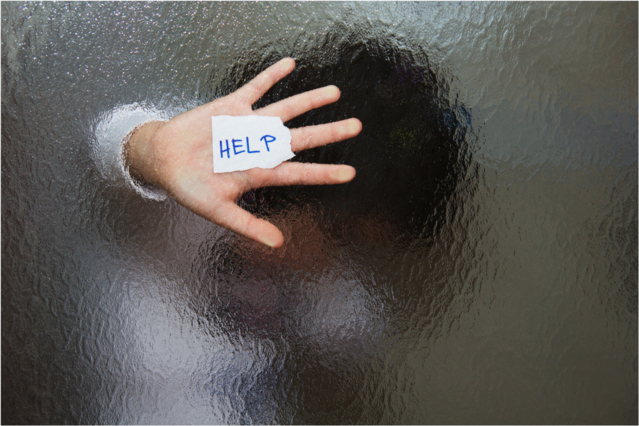Trust
Larry Nassar: Exploiting Privilege and Trust
Five common patterns of sexual predators
Posted January 30, 2018

The Michigan State University physician Larry Nassar has been sentenced to 175 years (maximum) in prison. There are no psychological assessments available to the public of the former USA Gymnastics doctor. However, the numerous sexual assaults committed by Dr. Nassar presents us with an opportunity to discuss sexual predators and the impact of their behavior on victims.
Betrayal, violation of trust, and remembrance of the inappropriate acts can leave abuse survivors with trauma-related symptoms. Conditions such as post-traumatic stress disorder (PTSD), anxiety, depression, complex PTSD, eating disorders, substance abuse, alcohol dependence, or a disordered personality (i.e., borderline personality) are not uncommon after abuse.
Understanding the psychological and neurobiological impact of trauma on survivors can help the abused and those who love them pursue treatment and support.
Heinous acts that violate our trust and body often disrupt neurochemistry and lead to dysregulation of the emotional system within our brain. These neurobiological changes can leave a survivor in a state of suffering, pain, and anger long after the abuse.
The Innocent Targets
Most children or teenagers who are sexually assaulted will know their abuser. Stranger molestation or rape represents approximately ten percent of reported cases. Unfortunately, some victims who come forward to expose sexual abusers are doubted, minimized, or blamed before their words are taken as truth. One of several variables contributing to ignoring of the victim’s complaints is the carefully orchestrated mask of the predator.
The Child Sexual Predator
Violating, manipulative, and deceitful; they engage in behavior that is nearly unimaginable. Sexual predators and pedophiles are the true wolf in sheep’s clothing. This group preys upon the most innocent and vulnerable in society.
Although their behavior is predatory, their ‘mask of normalcy’ will hide their true nature, making red flags difficult to detect. They can present as a powerful leader, successful business person, gentle professional, helpful neighbor, or awkward co-worker. However, only their victims will know the magnitude of their darkness.
The Psychopathic Child Predator
There is a subset of sexual predators that also meet criteria for psychopathy. Psychopathy falls under the Cluster B Personality Disorders within antisocial personality disorder. Research suggests that child molesters have one or more personality disorders.
Psychopaths do not and cannot feel badly for any harmful acts committed. Sexual predators with psychopathy understand right from wrong. Their sickness lies in their lack of morality, poor emotion processing, inability to care that they are dangerous, and absence of inhibitory control over deviant desires.
These individuals hurt others to satisfy a need they feel is their right to indulge. Given lack of empathy, shame, or guilt within this population, they work diligently to hide their unacceptable behaviors and manipulate anyone who may be on to them.
Five Common Patterns Found Among Child Sexual Abusers
1) Grooming
2) Manipulation
3) Cognitive Distortions
4) Victim Reversal
5) Lack of Empathy, Guilt, and Contrition
1) Grooming:
Grooming is a manipulation tactic used by most predators to gain the trust of their victims and their caretakers. Within grooming the predator may provide gifts, attention, time, mentoring, special privileges, alcohol, drugs, or companionship. If the abuser is successful, the grooming process will connect positive experiences to the perpetrator within the victim's mind.
Naturally, the person targeted will begin to feel this person is their friend or that the abuser has sincerity and integrity. It is normal to feel warm emotions toward someone who behaves with kindness. This is how relationships are built. However, in reality, the predator has no interest in a genuine relationship, but rather future sexual contact.
When the predator begins to cross boundaries by initiating violating behaviors (e.g., touching), the psychological impact on the victim can be profound. To make sense of the abuse, some children will adopt the belief that the offending behaviors were not wrong because it was committed by someone they trusted. Some may believe they are responsible for the abuse.
The bottom line - grooming is manipulation and demonstrates the predator’s premeditation to later violate their target.
2) Manipulation (i.e., The Mask, Gaslighting, & Exploitation of Power/Position)
Grooming is one of several forms of manipulation engaged in by sexual predators. Not only do they have to control the beliefs of their victim, but they also have to conceal their deviant behaviors from their family, employer, authorities, neighbors, and parents of their victims.
The Mask | Public Persona
Most abusers of this type have a persona they portray to the public. Unfortunately, in our society when someone is in a position of power or prestige (e.g., politician, actor, physician, or clergy) the reputation and respect associated with those roles can become aligned with that individual. When their friends, colleagues, or public are informed of their behavior, many will respond with, 'I do not believe that!' Victims of the powerful, influential, or respected are often blamed, called liars, greedy, or trouble-makers seeking to harm the career of their abuser. This problematic response leads to further psychological harm.
The predator's occupation or gentle, helpful public persona can be given more weight than the words of the person who was victimized. Awareness and acceptance that predatory behavior is not negated by intelligence, popularity, socioeconomic status, power, or occupation are where we all should move toward in our society. Many predators are aware of the assumption of innocence their positions provide and use that privilege to discredit their victims.
Gaslighting
Another form of manipulation commonly implemented by sexual predators is gaslighting. They use it to create confusion for the person they violated. Due to this tactic, the person may even question if the event happened. The sexual abuser in this instance creates an alternate reality for their victim.
3) Cognitive Distortions
Cognitive distortions of child molesters refer to their belief system, excuse-making, denial, defensiveness, justifications, and minimizing (Ciardha & Gannon, 2011). Not only will cognitive distortions be present when the perpetrator is caught (excuse making) but also when the only other person aware of their dangerous nature is their victim.
Some cognitive distortions can fuel repeat violations, as the abuser’s actions are in line with their malignant belief system. Bottom line—cognitive distortions allow the abuser ‘off the hook’ for horrific behaviors within their mind.
An example of a cognitive distortion (belief-related) held by some child molesters is:
It is not harmful to engage in sex acts with a child.
Within the above example, the perpetrator has a belief their behavior is harmless (Szumski & Zielona-Jenek, 2016).
4) Victim Reversal - 'I'm a good person. This is unfair!'
It is not uncommon to hear abusers who violate, murder, or destroy the life of another person discuss their 'goodness.' Many predators prefer to be seen in a positive light, even after they have committed heinous acts. Impression management and image can take precedence for individuals who lack the capacity for deep emotions.
Through manipulation, predators may convince others that they are victims of the very individuals they violated or victims of the legal system attempting to hold them accountable. Playing the victim and attempting to elicit compassion from others is a tactic to control a situation when faced with consequences for their behavior.
5) Lack of empathy, guilt, or contrition
The actions of sexual predators are considered ‘instrumental‘—meaning they committed a planned, calculated, and purposeful act for self-gratification. It probably goes without saying that an apology that follows such behavior will not be sincere or genuine.
For sexual predators with psychopathy, their apologies are often hollow for two reasons.
1) They are unable to experience complex emotional states such as contrition.
2) Their abusive behavior clearly demonstrated lack of inhibitory control, the absence of morality or empathy, and the presence of obsession, abuse of power, and addiction. Under such circumstances, it is apparent the predator not only engaged in the act intentionally, but derived pleasure.
Sexual predators, with coexisting psychopathy, lack guilt and empathy for their victims. Sadly, they do not struggle to live with themselves based on what they have done to others. For this group, the brain systems associated with morality, empathy, bonding, and remorse are severely dysfunctional. Therefore, they feel no compassion or pain for their victims; some will feel contempt.
Society and Awareness of Sexual Abuse
Predators that sexually violate children and teenagers get the opportunity to re-violate when we do not act immediately to bar them from their targets.
It is natural to let down your guard when a person is kind, encouraging, generous, and helpful to our children (e.g., the mask of many sexual offenders). It can be difficult to detect the warning signs of sexual predators and pedophiles that are among us. Many spend their lives perfecting their mask and counting on our bias to respect their occupations, intelligence, or position of power.
- You might also find this helpful: Surviving Abuse
References
Ciardha, C. & Gannon, T. (2011). The cognitive distortions of child molesters are in need of treatment. Journal of Sexual Aggression Vol. 17, Iss. 2
Fossati A, Madeddu F, Maffei C (1999). Borderline Personality Disorder and childhood sexual abuse: a meta-analytic study. J Pers Disord. Fall; 13(3):268-80.
Marshall, WL., Hamilton, K., & Fernandez, Y. (2001) Empathy Deficits and Cognitive Distortions in Child Molesters (2001). Sexual Abuse A Journal of Research and Treatment 13(2):123-30
Ogata, S., Silk K., Goodrich, S., Lohr, N., Westen, D., & Hill EM. (1990). Childhood sexual and physical abuse in adult patients with borderline personality disorder. Am J Psychiatry. Aug; 147(8):1008-13.
Szumski, F & Zielona-Jenek, M. (2016). Child molesters’ cognitive distortions. Conceptualizations of the term. Psychiatr. Pol. 2016; 50(5): 1053–1063
Tenbergen, G., Wittfoth, M., Frieling, H., Ponseti, J., Walter, M., Walter, H., Kruger, T. H. C. (2015). The Neurobiology and Psychology of Pedophilia: Recent Advances and Challenges. Frontiers in Human Neuroscience, 9, 344.
The U.S. Department of Justice NSOPW. Raising awareness about sexual abuse. Facts and Statistics. https://www.nsopw.gov/en/Education/FactsStatistics




